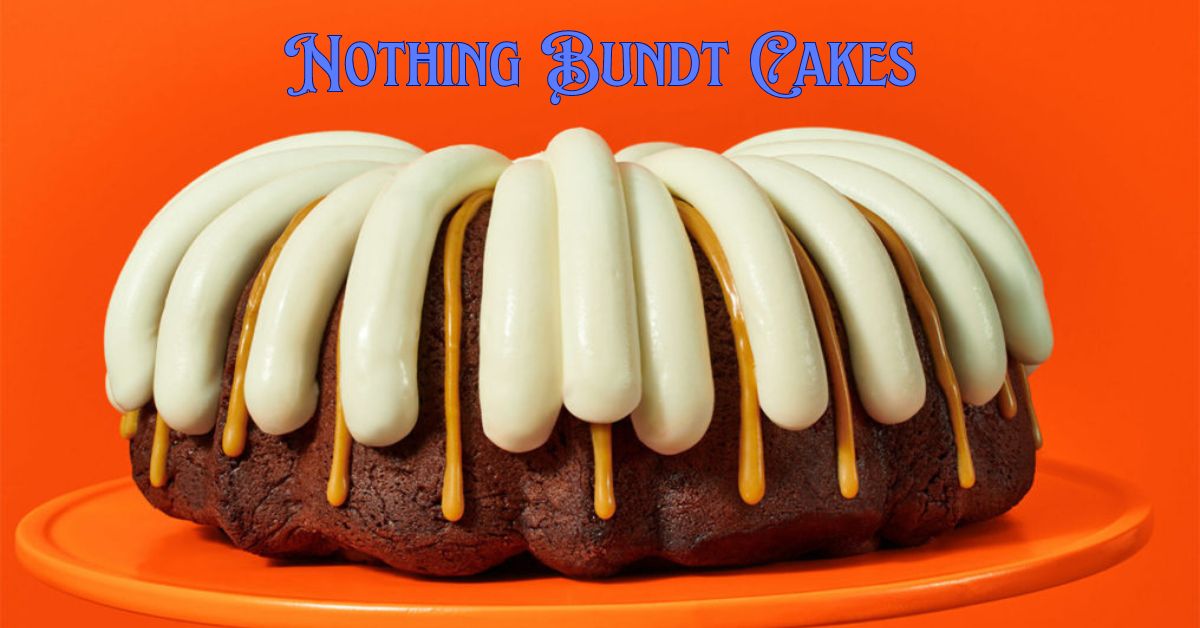Introduction
Nothing Bundt Cakes has carved out a sweet spot in the hearts of dessert lovers across the United States with its signature Bundt cakes. Founded on the principles of quality ingredients, exceptional baking techniques, and a passion for celebration, this bakery chain has become synonymous with delicious cakes that bring joy to any occasion.
History and Founding
Nothing Bundt Cakes was founded in 1997 by Dena Tripp and Debbie Shwetz in Las Vegas, Nevada. The duo’s shared love for baking and desire to create irresistible desserts led them to develop their unique take on the classic Bundt cake. From its humble beginnings, the bakery quickly gained popularity, prompting rapid expansion across the country.
The Bundt Cake Experience
At the heart of Nothing Bundt Cakes’ success is its commitment to quality and craftsmanship. Each cake is meticulously crafted using real eggs, butter, and cream cheese, ensuring a rich and moist texture that keeps customers coming back for more. The cakes are available in various sizes, from bite-sized Bundtinis to larger Bundt cakes perfect for any celebration.
Signature Flavors and Variety
Nothing Bundt Cakes offers a delectable assortment of flavors to suit every palate and occasion. Whether you crave the classic Vanilla or Chocolate Chocolate Chip, or prefer the tangy delight of Lemon or Red Velvet, there’s a flavor to satisfy every craving. Seasonal offerings and specialty flavors add a touch of excitement, ensuring there’s always something new to discover.
Decorating and Personalization
One of the hallmarks of Nothing Bundt Cakes is its attention to detail in presentation. Each cake is elegantly adorned with the bakery’s signature buttercream frosting petals, creating a distinctive and inviting look. Custom decorations and personalized messages make every cake a unique centerpiece for birthdays, weddings, anniversaries, and corporate events.
Community and Customer Experience
Beyond its delicious cakes, Nothing Bundt Cakes prides itself on fostering a warm and inviting atmosphere in its bakeries. Exceptional customer service and a commitment to community engagement have endeared the brand to loyal customers nationwide. Whether you’re picking up a cake for a special occasion or treating yourself to a sweet indulgence, the bakery strives to make every visit memorable.
Expansion and Recognition
Since its inception, Nothing Bundt Cakes has expanded to over 300 locations across the United States, delighting customers with its consistently exceptional cakes and warm hospitality. The brand has received numerous accolades and awards, solidifying its reputation as a leader in the dessert industry.
Conclusion
Nothing Bundt Cakes continues to flourish as a beloved destination for cake enthusiasts seeking quality, flavor, and a touch of sweetness in their lives. With its commitment to baking excellence and customer satisfaction, the bakery chain remains a testament to the enduring joy of celebrating life’s moments, big and small, with a delicious Bundt cake.
FAQs
- What makes Nothing Bundt Cakes unique?
- Nothing Bundt Cakes stands out for its dedication to using high-quality ingredients like real eggs, butter, and cream cheese in every cake. Their signature frosting petals and wide variety of flavors also set them apart.
- Are Nothing Bundt Cakes’ cakes customizable?
- Yes, Nothing Bundt Cakes offers customization options for their cakes. Customers can choose from various sizes and flavors, and personalize cakes with decorations and messages tailored to special occasions.
- Does Nothing Bundt Cakes offer gluten-free or vegan options?
- Currently, Nothing Bundt Cakes does not have gluten-free or vegan cakes as part of their regular menu. However, they may offer special accommodations or options upon request at some locations.
- How can I order from Nothing Bundt Cakes?
- Orders can be placed directly through their official website, through their mobile app, or by visiting one of their bakery locations. Online ordering typically allows customers to specify flavors, sizes, and customization details.
- Does Nothing Bundt Cake cater for events?
- Yes, Nothing Bundt Cake offers catering services for various events including birthdays, weddings, corporate gatherings, and more. They can accommodate large orders and often provide delivery or pickup options.
- Where can I find a Nothing Bundt Cake bakery near me?
- You can locate the nearest Nothing Bundt Cake bakery using the store locator on their official website. Simply enter your zip code or city to find the closest bakery, along with contact information and store hours.
- What are some popular occasions to order a cake from Nothing Bundt Cake?
- Customers often order cakes from Nothing Bundt Cakes for birthdays, anniversaries, baby showers, weddings, holidays, office parties, and other special celebrations. Their cakes are known for making any occasion memorable.
- Does Nothing Bundt Cake offer promotions or discounts?
- Yes, Nothing Bundt Cake occasionally runs promotions, discounts, and special offers, especially during holidays and special events. Checking their website or signing up for their newsletter can keep you informed about current deals.
- Are there seasonal flavors available at Nothing Bundt Cake?
- Yes, Nothing Bundt Cakes introduces seasonal flavors throughout the year, offering limited-time options that reflect the flavors of the season. These seasonal cakes add variety and excitement to their menu.
- What should I do if I have a problem with my order from Nothing Bundt Cake?
- If you encounter any issues with your order, such as missing items or quality concerns, it’s best to contact the specific bakery where you placed your order. They can assist with resolving the issue promptly.










